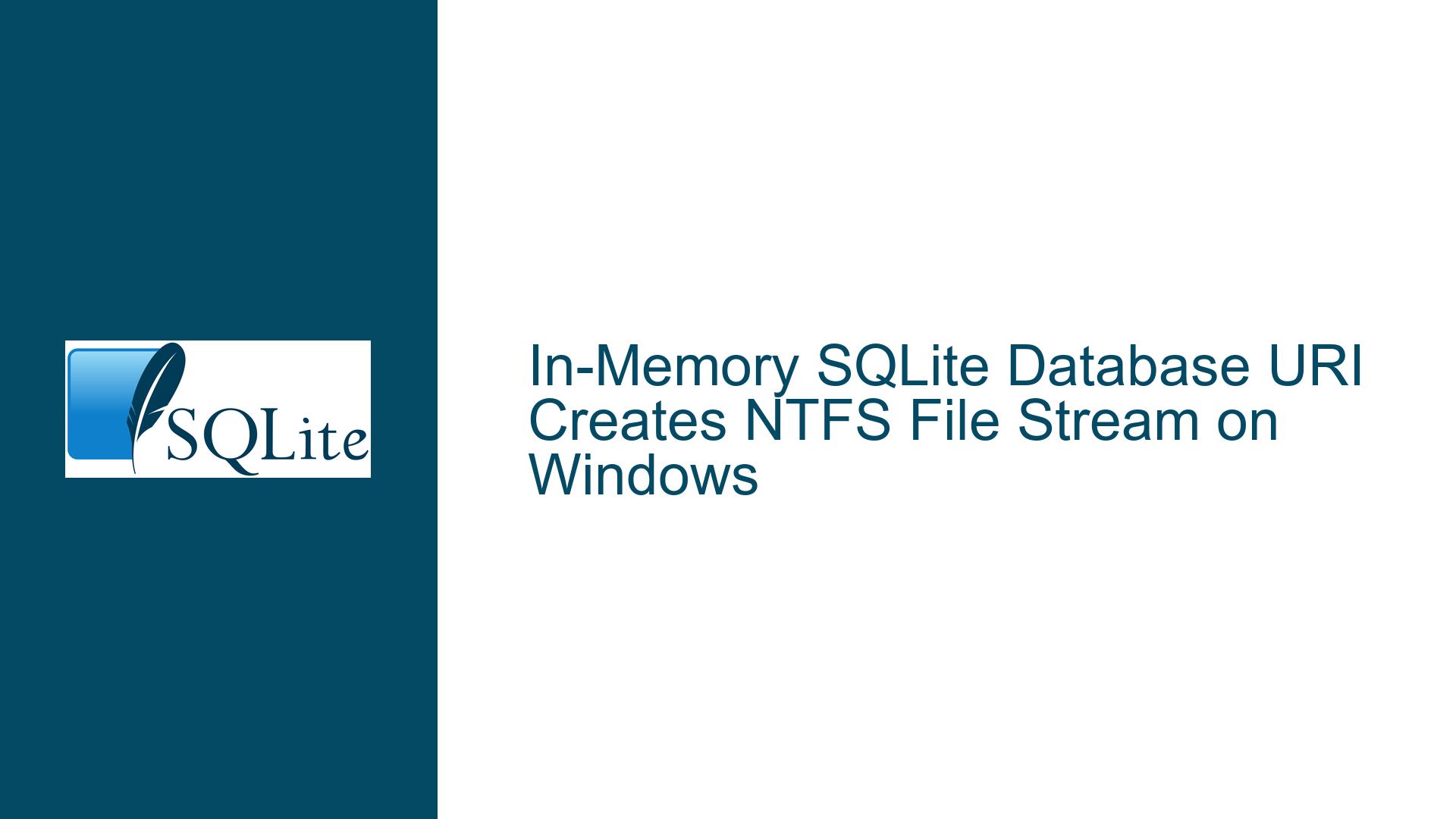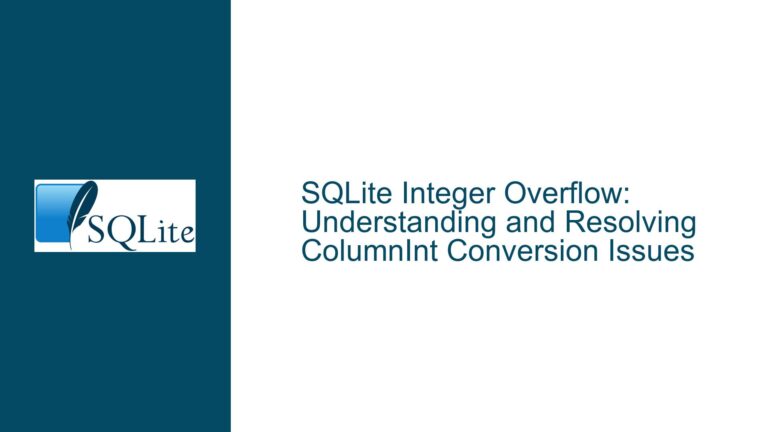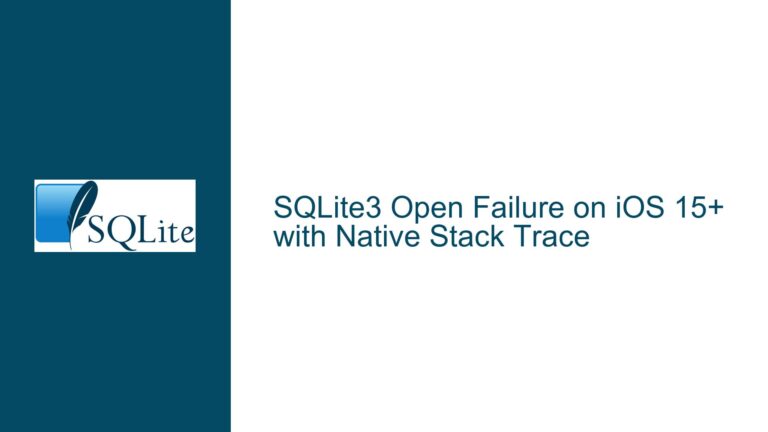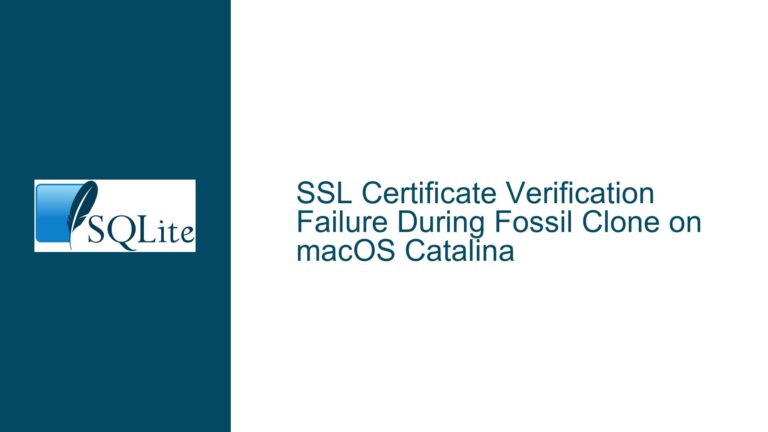In-Memory SQLite Database URI Creates NTFS File Stream on Windows
Understanding the Misinterpretation of In-Memory URI as NTFS Alternate Data Stream
The core issue arises when attempting to create an in-memory SQLite database using a URI-formatted connection string on Windows systems with NTFS. Instead of the database residing purely in memory, the system creates a file named "file" with an NTFS Alternate Data Stream (ADS) labeled "memdb1." This behavior contradicts the expected outcome of a memory-resident database. The problem is rooted in how SQLite interprets the URI, how the application configures URI handling, and potential confusion between SQLite’s in-memory database modes. Below, we dissect the technical nuances, diagnose the causes, and provide actionable solutions.
Diagnosing URI Parsing and Configuration Flags in SQLite
1. URI Recognition and the SQLITE_OPEN_URI Flag
SQLite requires explicit enabling of URI filename handling through the SQLITE_OPEN_URI flag or compile-time option SQLITE_USE_URI=1. When omitted, SQLite treats URIs as literal filenames. On NTFS, the colon (:) in "file:memdb1" triggers the creation of an Alternate Data Stream named "memdb1" under a file named "file." This occurs because NTFS interprets the colon as a separator for streams. The absence of URI parsing transforms the intended in-memory database into a filesystem artifact.
Key Insight: The presence of the "file" artifact indicates that SQLite is not recognizing the URI syntax. This directly implicates missing URI-handling flags in the application or SQLite build.
2. Shared Cache Mode and Its Role in Cross-Connection Access
The URI includes cache=shared, which enables shared cache mode for in-memory databases. Shared cache allows multiple database connections to access the same in-memory database. However, shared cache has known limitations and is generally discouraged due to concurrency issues. The user’s workflow involves modifying an in-memory database after a VACUUM operation and persisting changes to a file, which necessitates cross-connection access. Shared cache might have been selected as a legacy workaround before alternatives like memvfs became available.
Key Insight: The reliance on shared cache introduces complexity, especially when combined with misconfigured URI handling. This creates a fragile setup where configuration errors cascade into unexpected filesystem interactions.
3. Ambiguities Between :memory:, memvfs, and URI-Based In-Memory Databases
SQLite offers multiple in-memory database mechanisms:
:memory:: A private, unnamed in-memory database destroyed when the connection closes.- URI with
mode=memory: A named in-memory database that persists across connections if shared cache is enabled. memvfs: A virtual filesystem extension that emulates an in-memory filesystem, allowing named databases without filesystem dependencies.
The user’s confusion stems from conflating these mechanisms. For example, memvfs eliminates the need for shared cache by providing a portable, filesystem-like abstraction for in-memory databases. However, memvfs is a newer addition, and its adoption might be hindered by documentation gaps or compatibility concerns.
Key Insight: Misunderstanding the distinctions between in-memory database types leads to suboptimal configuration choices, such as relying on shared cache when memvfs would be more appropriate.
Resolving NTFS Stream Creation and Ensuring In-Memory Behavior
1. Enabling URI Parsing in the Application and SQLite Build
Step 1: Verify Compile-Time Flags
Ensure SQLite is compiled with SQLITE_USE_URI=1. This enables URI parsing globally. On Windows, precompiled binaries (e.g., those bundled with Qt) might exclude this flag. To check, execute:
SELECT sqlite_compileoption_used('SQLITE_USE_URI');
A result of 1 confirms URI support.
Step 2: Use sqlite3_open_v2 with Explicit Flags
If recompiling SQLite is impractical, use sqlite3_open_v2 and include SQLITE_OPEN_URI in the flags:
rc = sqlite3_open_v2(
"file:memdb1?mode=memory&cache=shared",
&db,
SQLITE_OPEN_READWRITE | SQLITE_OPEN_CREATE | SQLITE_OPEN_URI,
NULL
);
This overrides the library’s default URI handling.
Step 3: Validate Qt’s URI Handling
In Qt, QSqlDatabase::setConnectOptions must pass SQLITE_OPEN_URI to the underlying SQLite API. For example:
QSqlDatabase db = QSqlDatabase::addDatabase("QSQLITE");
db.setDatabaseName("file:memdb1?mode=memory&cache=shared");
db.setConnectOptions("QSQLITE_OPEN_URI=1"); // Qt-specific option
Test this configuration with a simple in-memory query to confirm no files are created.
2. Transitioning from Shared Cache to memvfs
Step 1: Evaluate memvfs Compatibility
memvfs is a compile-time extension. Ensure the SQLite build includes memvfs.c and registers the VFS at runtime:
sqlite3_vfs_register(sqlite3_memvfs(), 1);
Step 2: Create an In-Memory Database with memvfs
Use a URI specifying the memvfs virtual filesystem:
rc = sqlite3_open_v2(
"file:/memdb1?vfs=memvfs",
&db,
SQLITE_OPEN_READWRITE | SQLITE_OPEN_CREATE | SQLITE_OPEN_URI,
NULL
);
This creates a named in-memory database without relying on shared cache or NTFS streams.
Step 3: Compare Shared Cache and memvfs Performance
Benchmark cross-connection access latency and concurrency. memvfs avoids shared cache locks, offering better scalability for write-heavy workloads.
3. Correcting VACUUM Workflows with In-Memory Databases
Step 1: Diagnose VACUUM INTO Behavior
The user’s workflow involves:
VACUUMa file-based database into memory.- Modify the in-memory database.
VACUUMthe modified database into a new file.
Shared cache is likely required here because VACUUM INTO creates a temporary database that must be accessible to multiple connections. However, this can be replaced with memvfs:
Step 2: Implement VACUUM with memvfs
-- Attach a memvfs database as the target for VACUUM
ATTACH DATABASE 'file:/tempdb?vfs=memvfs' AS memdb;
VACUUM memdb;
DETACH DATABASE memdb;
Modify memdb and then VACUUM it back to a file.
Step 3: Address Serialization and Deserialization
For large datasets, use sqlite3_serialize and sqlite3_deserialize to transfer data between file and memory. This avoids VACUUM overhead:
// Deserialize file into memory
sqlite3_deserialize(
db, // Target connection
"main", // Schema name
blob_data, // Serialized data
blob_size,
blob_size,
SQLITE_DESERIALIZE_FREEONCLOSE | SQLITE_DESERIALIZE_RESIZEABLE
);
// Serialize memory to file
unsigned char *data;
sqlite3_int64 size;
sqlite3_serialize(db, "main", &data, &size, 0);
FILE *fp = fopen("output.db", "wb");
fwrite(data, 1, size, fp);
fclose(fp);
sqlite3_free(data);
Optimizing In-Memory Database Usage and Avoiding Pitfalls
1. Configuring Cross-Platform URI Formats
On Windows, colons in filenames are reserved for ADS. Use alternative URI syntax:
file:///memdb1?mode=memory&cache=shared
The triple slash (///) denotes an empty hostname, avoiding NTFS stream interpretation. Test this format across platforms to ensure consistency.
2. Auditing Filesystem Interactions
Enable SQLite’s debug tracing to log filesystem operations:
sqlite3_trace_v2(
db,
SQLITE_TRACE_STMT | SQLITE_TRACE_PROFILE,
[](unsigned T, void *C, void *P, void *X) -> int {
printf("Operation: %s\n", (const char*)X);
return 0;
},
NULL
);
Inspect logs for unexpected OPEN or ACCESS calls to confirm in-memory behavior.
3. Addressing Size Limitations of In-Memory Databases
Shared Cache: Limited by the SQLITE_MEMDB_DEFAULT_MAXSIZE compile-time setting (default: 1GB). Override with:
sqlite3_file_control(db, "main", SQLITE_FCNTL_SIZE_LIMIT, &max_size);
memvfs: No inherent size limits beyond system memory. Monitor memory usage to prevent out-of-memory crashes.
4. Migrating Legacy Shared Cache Workflows to memvfs
Refactor code to replace cache=shared with memvfs:
- rc = sqlite3_open("file:memdb1?mode=memory&cache=shared", &db);
+ rc = sqlite3_open_v2("file:/memdb1?vfs=memvfs", &db, SQLITE_OPEN_READWRITE | SQLITE_OPEN_CREATE | SQLITE_OPEN_URI, NULL);
Update connection logic to ensure all threads/processes use the same memvfs instance.
By systematically addressing URI configuration, replacing deprecated shared cache usage with modern alternatives like memvfs, and validating filesystem interactions, developers can eliminate unintended NTFS stream creation and achieve robust in-memory database behavior on Windows.






